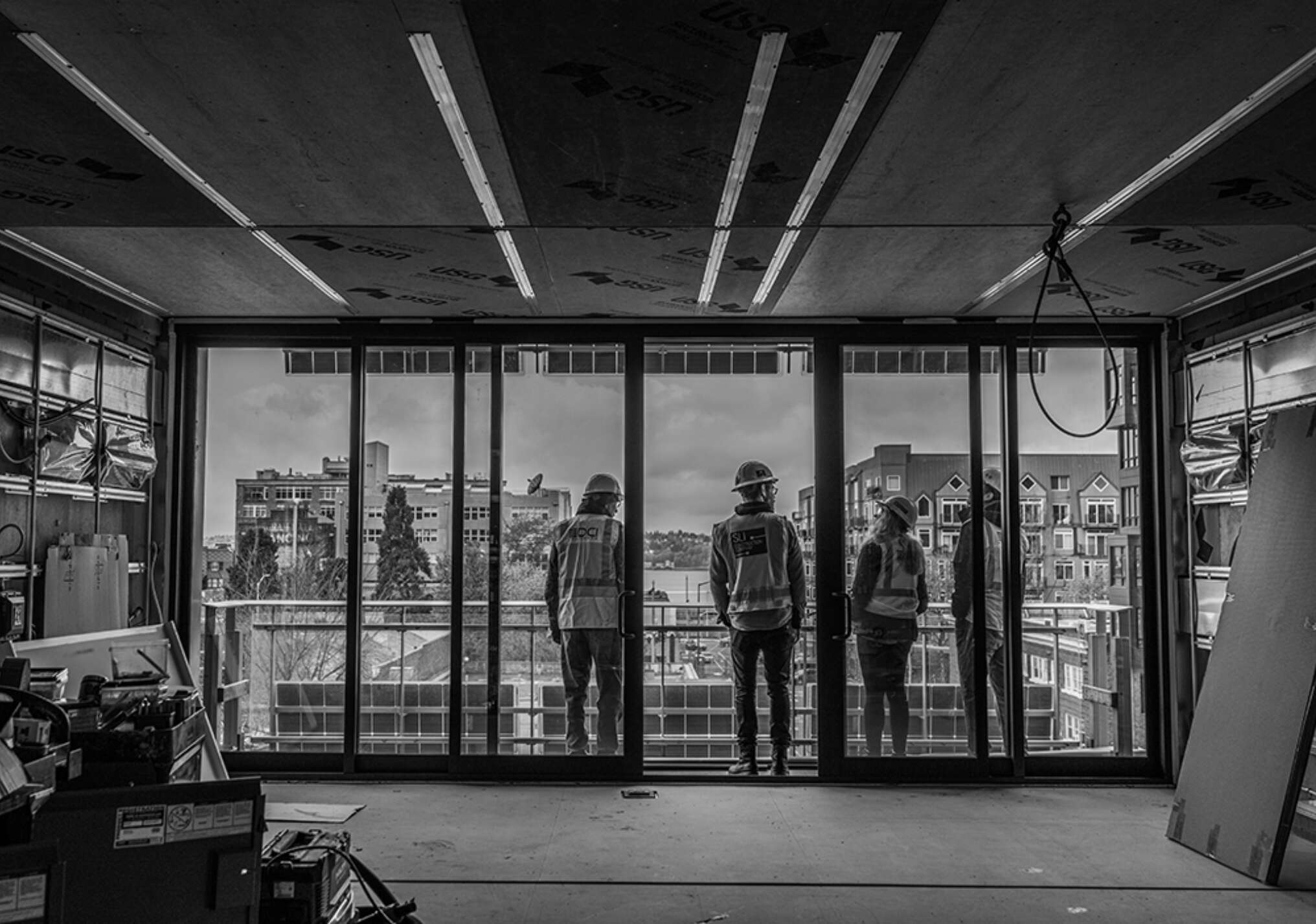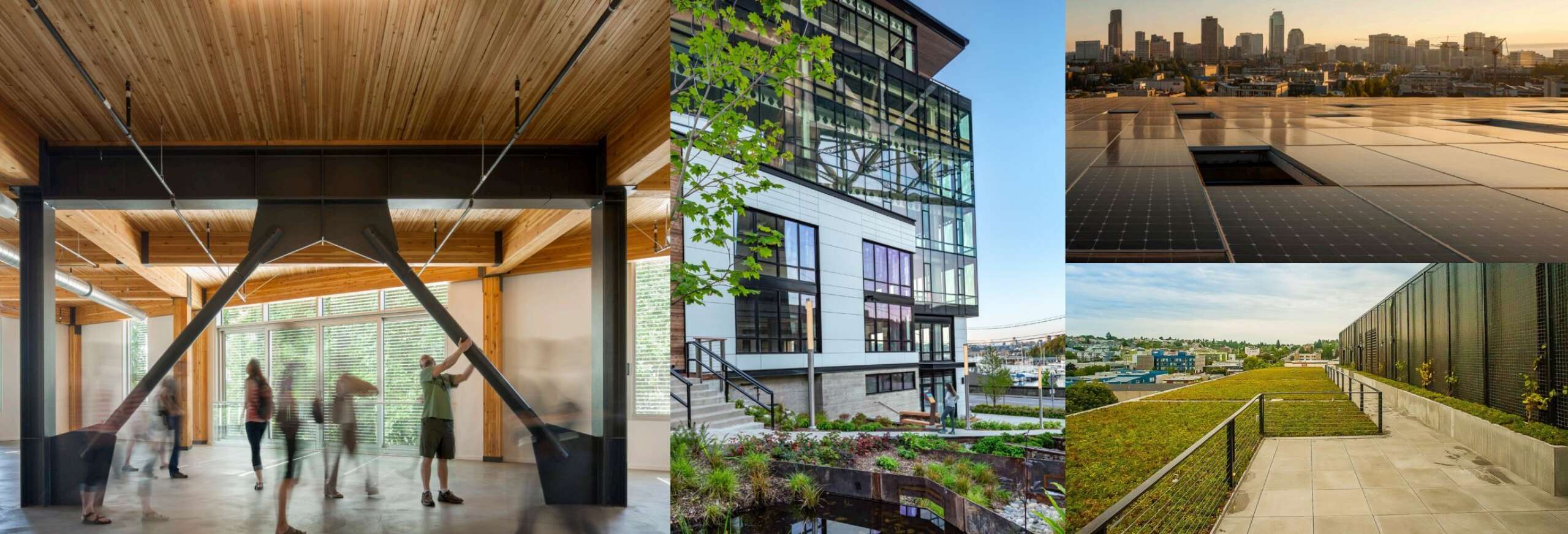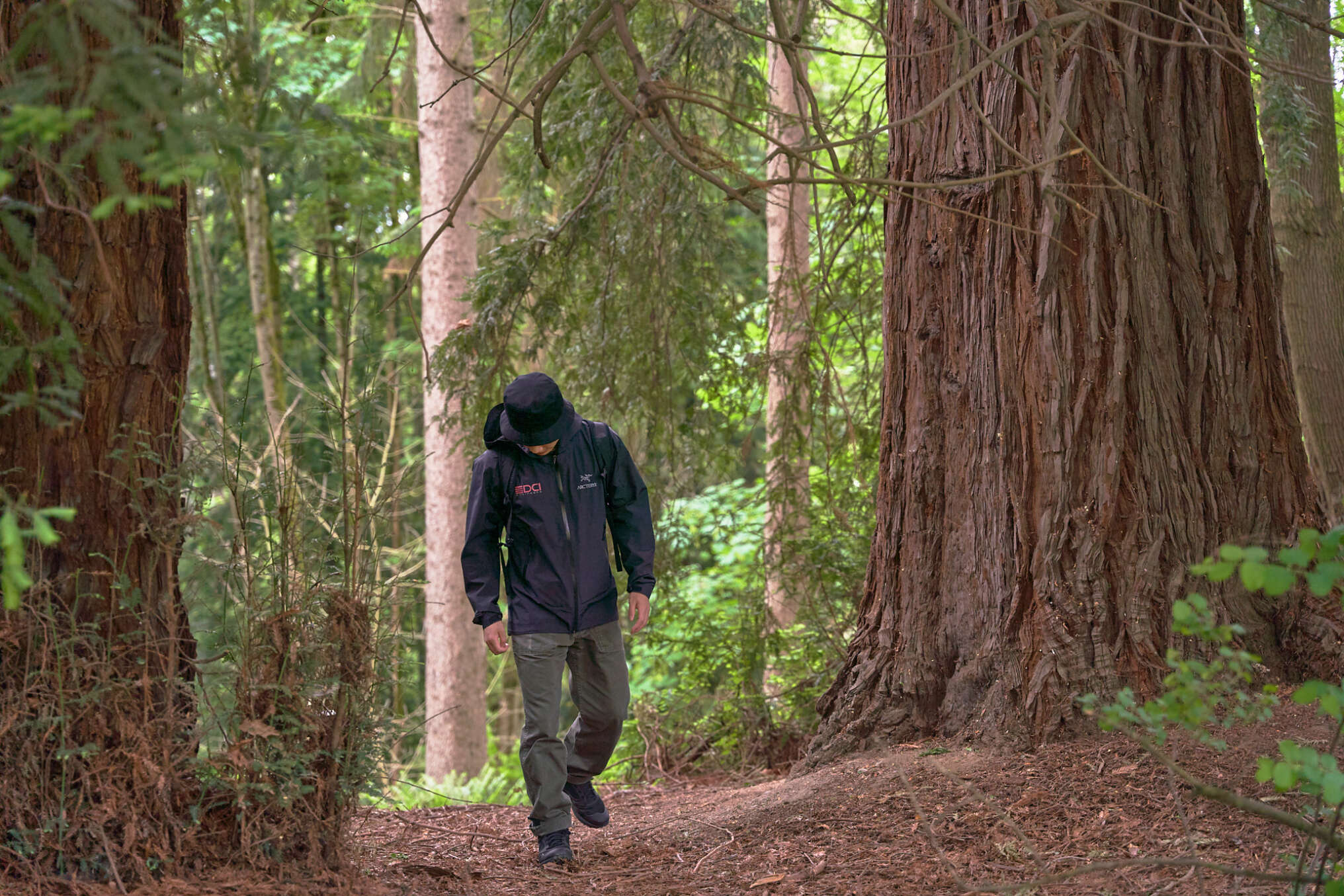DCI leverages Life-Cycle Assessment, decades of structural design experience and industry connections to assist our clients in achieving project sustainability goals while also bolstering our commitment to reduce the building industry’s carbon footprint as a whole.
We are committed to helping our project partners arrive at cost-effective design solutions that employ sustainable design practices – whether aiming for specific certifications such as LEED® Design or the Living Building Pilot Program, or just simply helping to make this planet a little bit greener… DCI is here for it.
We believe high-performance structures must also demonstrate environmental, social, and economic responsibility, and we are constantly exploring how structural systems impact embodied carbon, material sourcing and other sustainability factors.


DCI isn’t just focused on building something tangible, but also building a culture that embraces diverse ideas, equality, and celebrates the individual stories of our employees. We believe diversity drives innovation in an environment that is designed to help employees grow.
1/3
2/3
3/3
While DCI is proud to help build within our communities, sometimes a new building just isn’t enough. Helping change the built environment comes with a responsibility to help the people who are a part of it – as well as to the men and women who are entering the industry. Learn More
As the AEC industry works toward greener building solutions, engineers have an unprecedented opportunity to create impactful change by way of the structure. Learn how DCI is focused on a better, more sustainable future.
DCI is focused on building something tangible. We're looking to build a culture that embraces diverse ideas, equality, and celebrates the individual stories of our employees. Learn more.
Click through DCI's Sustainability Brochure below for a deeper dive on Sustainability Services and Expertise!

DCI Engineers is a signatory firm for the Structural Engineers 2050 Commitment Program, which was developed by the Sustainability Committee of the Structural Engineering Institute (SEI) of the American Society of Civil Engineers (ASCE).
We're committed to understanding, reducing and ultimately eliminating embodied carbon in our projects by 2050.
Part of our SE 2050 Commitment includes a yearly Embodied Carbon Action Plan (ECAP). Click through our latest update below!
With embodied carbon being a factor beyond just the operational components of a building, structural engineers have an unprecedented opportunity and responsibility to tackle the upfront product stage -- the beginning of a building's life.
As engineers, we can make impactful change by way of the structure, providing one that will outlive the many cycles of tenant improvements and building system upgrades for years to come.
But change doesn't happen within a silo. It requires education at all levels and buy-in from project partners. Thankfully, sustainable design is possible, and its implementation is becoming more streamline with each year and every project.

Existing Site Analysis, Tenant Improvements, Alternate Building Occupancy Adaptation, Reclaimed Material Recommendations

Panelized Systems, Volumetric Modular, Component Assemblies, Manufacturer Coordination

Performance Objective Coordination, Material Supplier Collaboration for Performance Optimization, Research and Development of Alternate Analysis Methods

Connection Detailing for Future Building Decomission and Adaptability, Demolition Permit Coordination, Desired Risk Performance Implementation

LEED, ILFI, Green Globes, AEGB & More

Fire-Rated Member and Connection Detailing, Supplier Coordination for Maximum Layout Efficiency.

Holistic Bidding, Design Optimization, Lean Construction

Performance-Based Specifications, EPD Requirements, GWP Limits

Castellated Beams, High Strength Structural Steel, Cement Minimization, High Strength Concrete Reinforcing, Wood Fiber Optimization, Composite and Hybrid Systems


Click to read the latest news updates, press mentions and thought pieces regarding DCI's sustainability efforts.